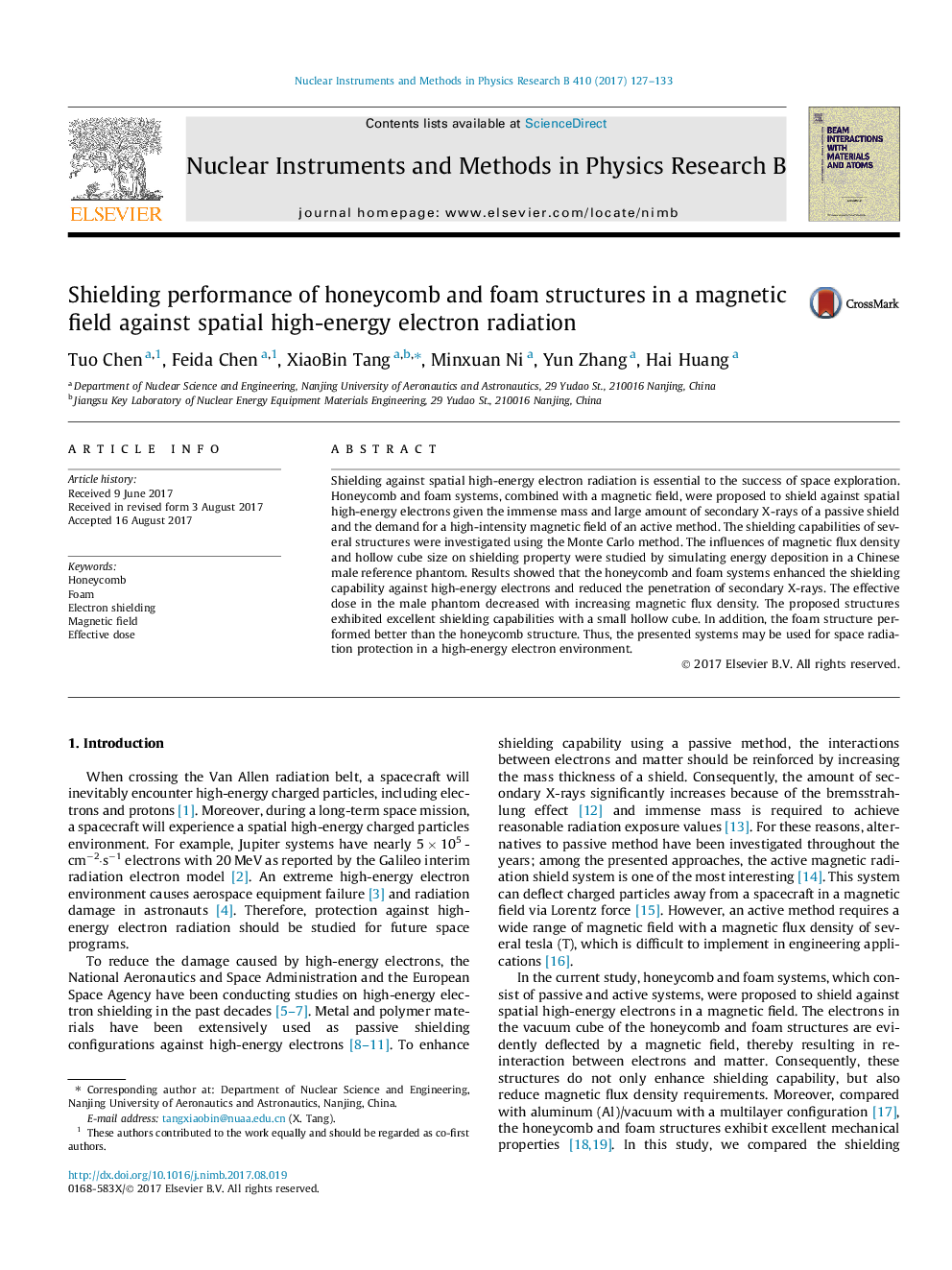| Article ID | Journal | Published Year | Pages | File Type |
|---|---|---|---|---|
| 5467124 | Nuclear Instruments and Methods in Physics Research Section B: Beam Interactions with Materials and Atoms | 2017 | 7 Pages |
Abstract
Shielding against spatial high-energy electron radiation is essential to the success of space exploration. Honeycomb and foam systems, combined with a magnetic field, were proposed to shield against spatial high-energy electrons given the immense mass and large amount of secondary X-rays of a passive shield and the demand for a high-intensity magnetic field of an active method. The shielding capabilities of several structures were investigated using the Monte Carlo method. The influences of magnetic flux density and hollow cube size on shielding property were studied by simulating energy deposition in a Chinese male reference phantom. Results showed that the honeycomb and foam systems enhanced the shielding capability against high-energy electrons and reduced the penetration of secondary X-rays. The effective dose in the male phantom decreased with increasing magnetic flux density. The proposed structures exhibited excellent shielding capabilities with a small hollow cube. In addition, the foam structure performed better than the honeycomb structure. Thus, the presented systems may be used for space radiation protection in a high-energy electron environment.
Related Topics
Physical Sciences and Engineering
Materials Science
Surfaces, Coatings and Films
Authors
Tuo Chen, Feida Chen, XiaoBin Tang, Minxuan Ni, Yun Zhang, Hai Huang,
